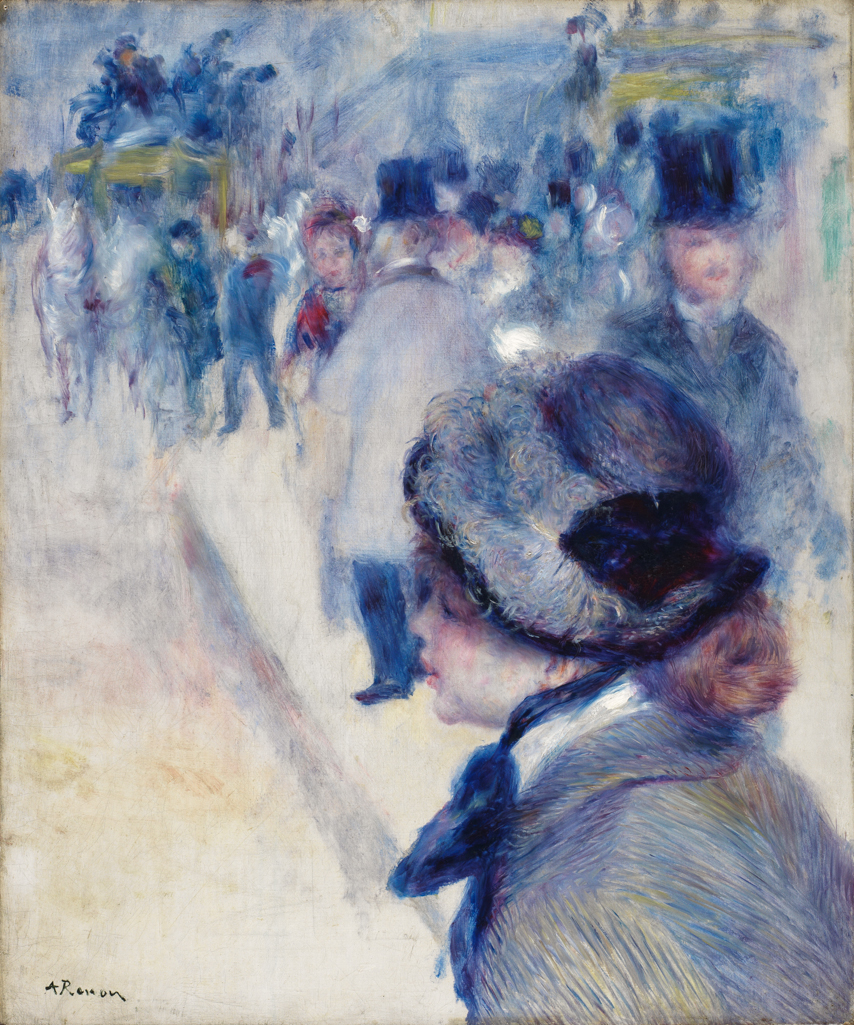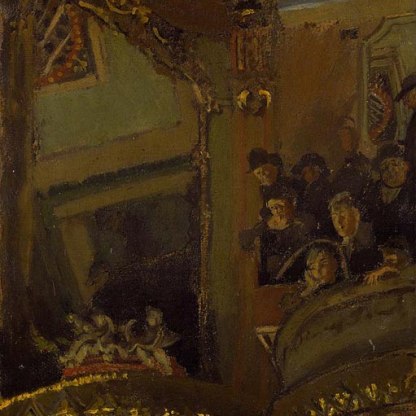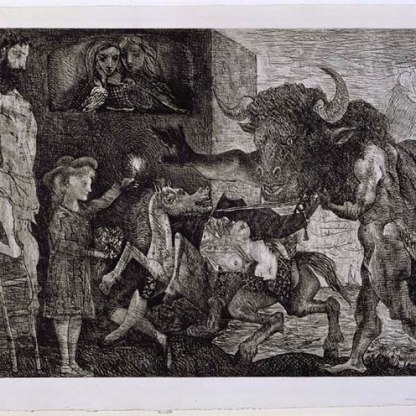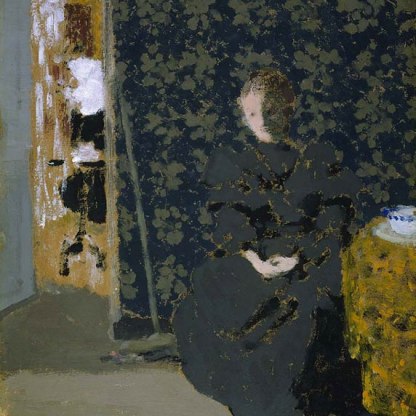Au Café

Personally, I don't take cabs. You don't see anyone. That's why I love to ride on the omnibus – you can look at people. We were created to look at one another, weren't we?
Degas to the artist Walter Sickert
By the late 1870s there were over two million people living in Paris for Edgar Degas to look at. They were illuminated by the newly invented electric light. They travelled down the wide, recently constructed boulevards of the city on horse-drawn buses. Very soon, the wealthier among them would communicate with each other over the telephone. Modern, urban life as we recognise it today was developing. And Degas was perhaps its greatest, most humane early visual chronicler.
Although this snapshot of daily Parisian life has been known as Au Café since it was sold in 1918, it is by no means clear where these two women are sitting or what they are doing. It has been suggested that they are prostitutes, or workers sewing artificial flowers onto clothes. There is no crockery or sewing apparatus for us to be able to tell either way. There seems to be a piece of white fabric with red decorations spread before them: it might be a tablecloth, it might be a dress. Degas does not specify. Yet despite, or maybe because of this lack of obvious context or narrative, they are a fascinating pair.
Both women are entirely oblivious to the viewer. We look at them in the same way that Degas regarded his fellow passengers on the omnibus, intrigued but detached. The woman on the left, half cut off by the edge of the canvas, leans forward and looks toward her companion whose own face is cast down. Is she looking at something on the table? Reading a letter?
The slight blur to her face suggests that she has been caught in motion, just turning her head. Her grey complexion hints at unhappiness, even illness. There is a story here, but its details are out of reach. Workers or café-goers? Both were favourite subjects of Degas, and ultimately it perhaps doesn't matter who the women are. What counts is the mood that the artist has sought to create.
And this mood is not one that we would perhaps immediately associate with Paris at the end of the nineteenth century. With its predominantly monochrome palette, its air of weariness and drudgery, Degas' painting contrasts sharply with La Place Clichy [PD.44-1986], a roughly contemporary snapshot of Parisian life by Pierre-Auguste Renoir, also in the Fitzwilliam.

Degas and Renoir were both members of a group of artists who exhibited works independently of the Paris Salon between 1874 and 1886, and who became known collectively as the Impressionists. But though he admired their work, Degas deliberately distanced himself from the likes of Renoir and Claude Monet. While they prided themselves on the spontaneity of their painting, which was often done directly in front of the subject, Degas insisted upon the importance of studying the art of the past and working from sketches. He rarely painted out of doors, and stuck almost exclusively to urban subjects.
He perhaps had more in common with the French novelist Emile Zola, whose controversial novel L'Assommoir was published in 1877 at roughly the same time as this picture was painted. Zola's work of urban realism, which caused outrage in conservative circles in its time, is set in the same drab, working-class world of cheap cafés and laundries that Degas frequently depicted, and both novelist and painter attracted hostile criticism for what was perceived as the brutality of their naturalism.
Although Degas had probably worked on Au Café enough for his own satisfaction it is unlikely that, with its unfinished appearance, he ever put it up for sale. It was eventually bought at the artist's studio sale, after his death.
Themes and periods
Data from our collections database
1st Atelier Degas sale, Paris, Galerie Georges Petit, 6-8 May 1918 (71), Estimate 12,000-14,000 Francs ?; with the Independent Gallery, London (P.M. Turner); coll. Oliver F. Brown; F. Hindley Smith, 1925
Acquisition and important dates
- Method of acquisition: Bequeathed
- Dates: 1939
Dating
Maker(s)
- Degas, Edgar Painter
Materials used in production
Read more about this recordOther highlight objects you might like
Suggested Curating Cambridge products
Sign up to our emails
Be the first to hear about our news, exhibitions, events and more…





